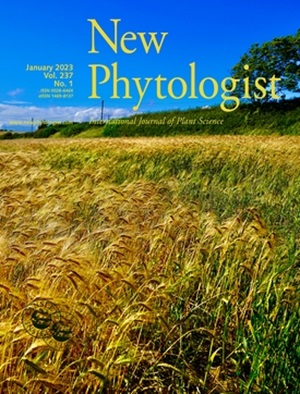CsTCP14-CsIAA4 module-mediated repression of auxin signaling regulates citrus somatic embryogenesis
IF 8.3
1区 生物学
Q1 PLANT SCIENCES
引用次数: 0
Abstract
- Somatic embryogenesis (SE) is an important in vitro regeneration approach for plants, especially in biotechnological manipulations. However, SE capability is difficult to modulate and deteriorates over time. Glycerol medium is effective in SE induction of citrus, while the mechanisms remain unclear.
- We found that auxin signaling reduced soon after the citrus embryogenic callus (EC) was transferred to glycerol medium, and the expression of CsTCP14 and AUX/IAA gene CsIAA4 was induced by glycerol. Overexpression of CsIAAm that encodes a stable indole-3-acetic acid (IAA) protein suppressed auxin signaling in EC and enhanced SE. CsTCP14 bound to the promoter of CsIAA4 and activate CsIAA4 expression in EC with strong SE competence. Overexpression of CsTCP14 activated CsIAA4 expression and reduced auxin signaling in citrus EC, and thus enhanced SE.
- Application of exogenous IAA inhibits SE, while the auxin signaling inhibitor p-chlorophenoxyisobutyric acid (PCIB) enhances SE in citrus. The SE enhancement effect of CsIAA4 and CsTCP14 overexpression on EC was alleviated by exogenous IAA, but reinforced by PCIB.
- We uncover the regulatory pathway of CsTCP14-CsIAA4 module-mediated repression of auxin signaling in glycerol-induced citrus SE, which deepens our understanding of SE mechanisms in plants and supports modulation of SE in citrus breeding via biotechnological approaches.
求助全文
约1分钟内获得全文
求助全文
来源期刊

New Phytologist
生物-植物科学
自引率
5.30%
发文量
728
期刊介绍:
New Phytologist is an international electronic journal published 24 times a year. It is owned by the New Phytologist Foundation, a non-profit-making charitable organization dedicated to promoting plant science. The journal publishes excellent, novel, rigorous, and timely research and scholarship in plant science and its applications. The articles cover topics in five sections: Physiology & Development, Environment, Interaction, Evolution, and Transformative Plant Biotechnology. These sections encompass intracellular processes, global environmental change, and encourage cross-disciplinary approaches. The journal recognizes the use of techniques from molecular and cell biology, functional genomics, modeling, and system-based approaches in plant science. Abstracting and Indexing Information for New Phytologist includes Academic Search, AgBiotech News & Information, Agroforestry Abstracts, Biochemistry & Biophysics Citation Index, Botanical Pesticides, CAB Abstracts®, Environment Index, Global Health, and Plant Breeding Abstracts, and others.
 求助内容:
求助内容: 应助结果提醒方式:
应助结果提醒方式:


